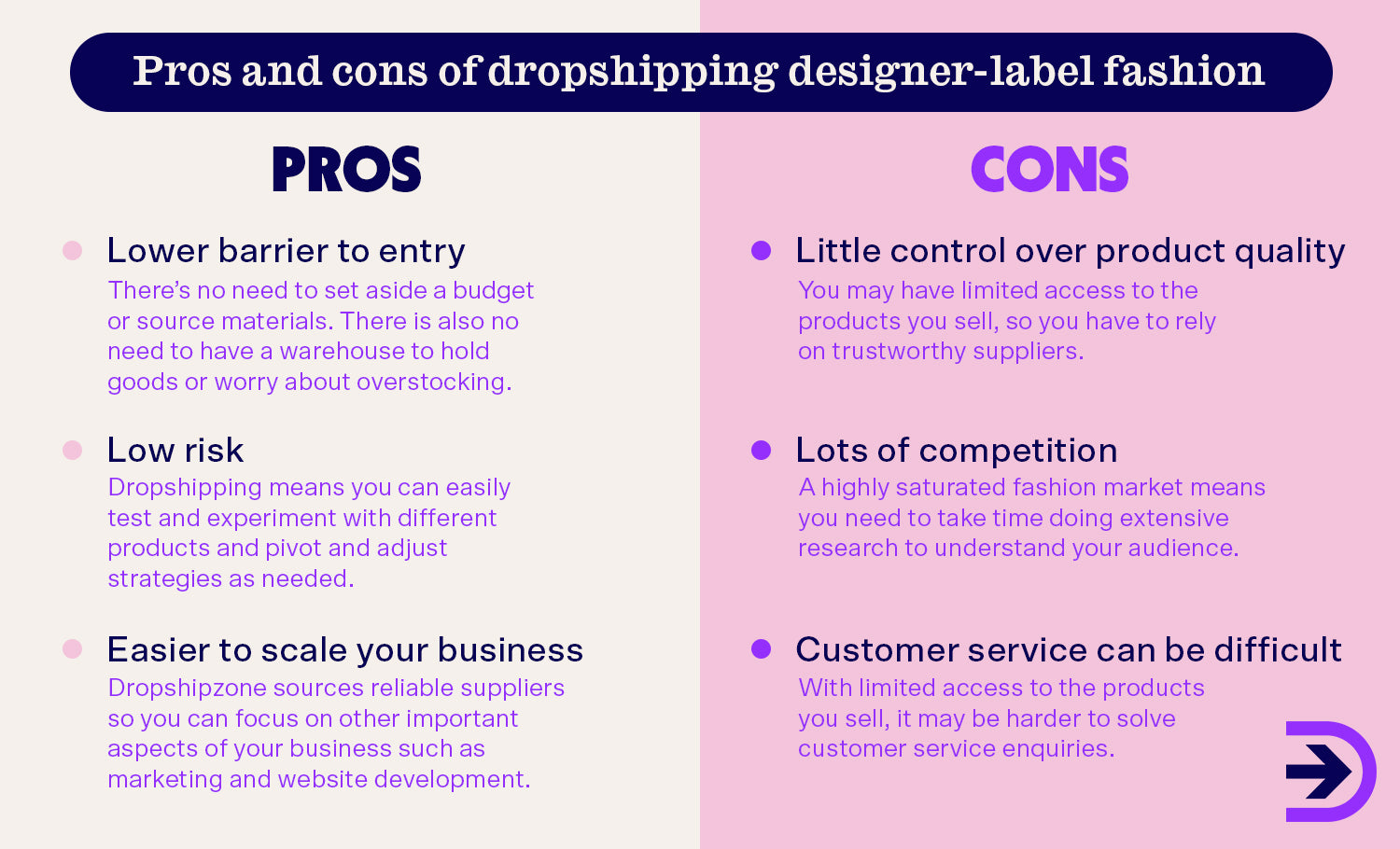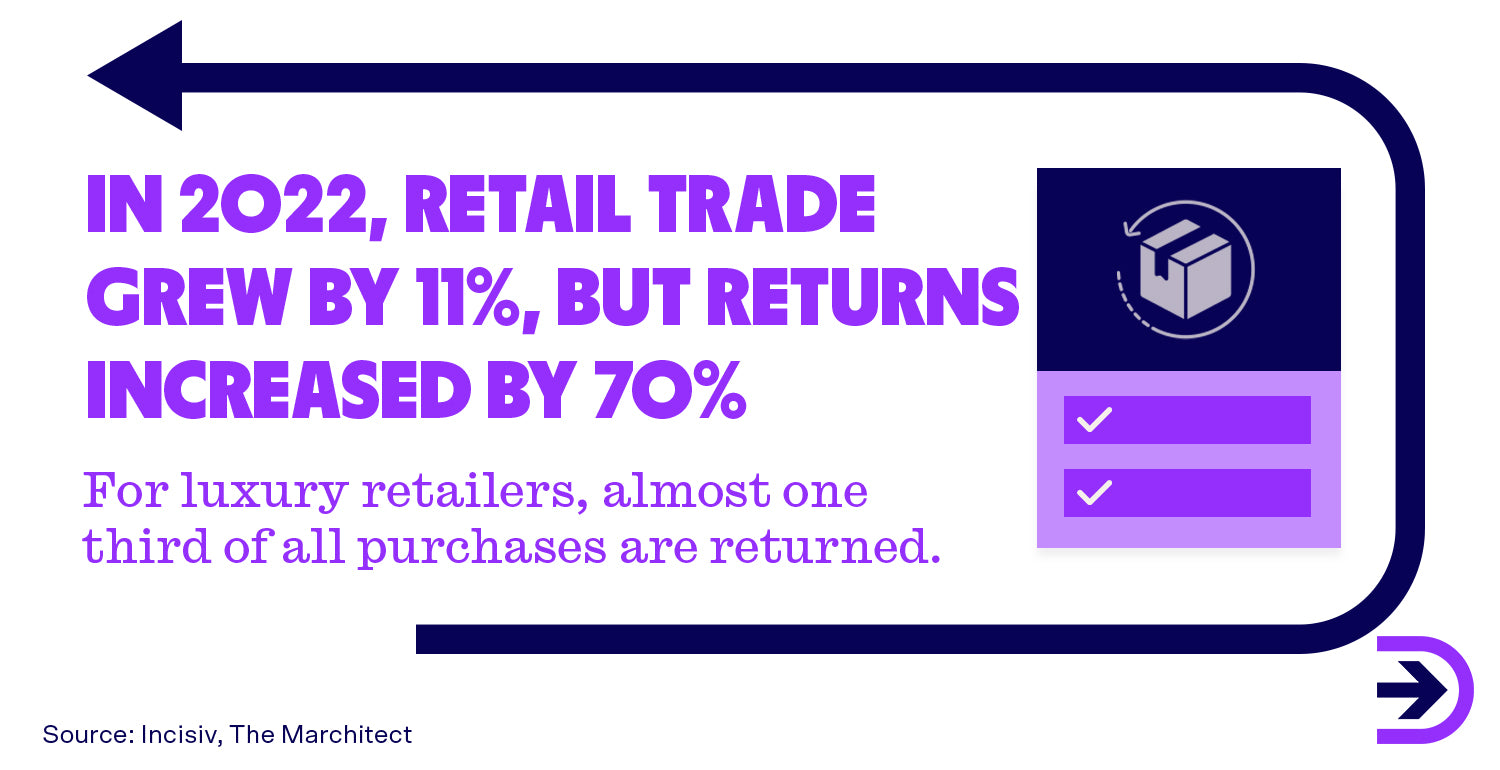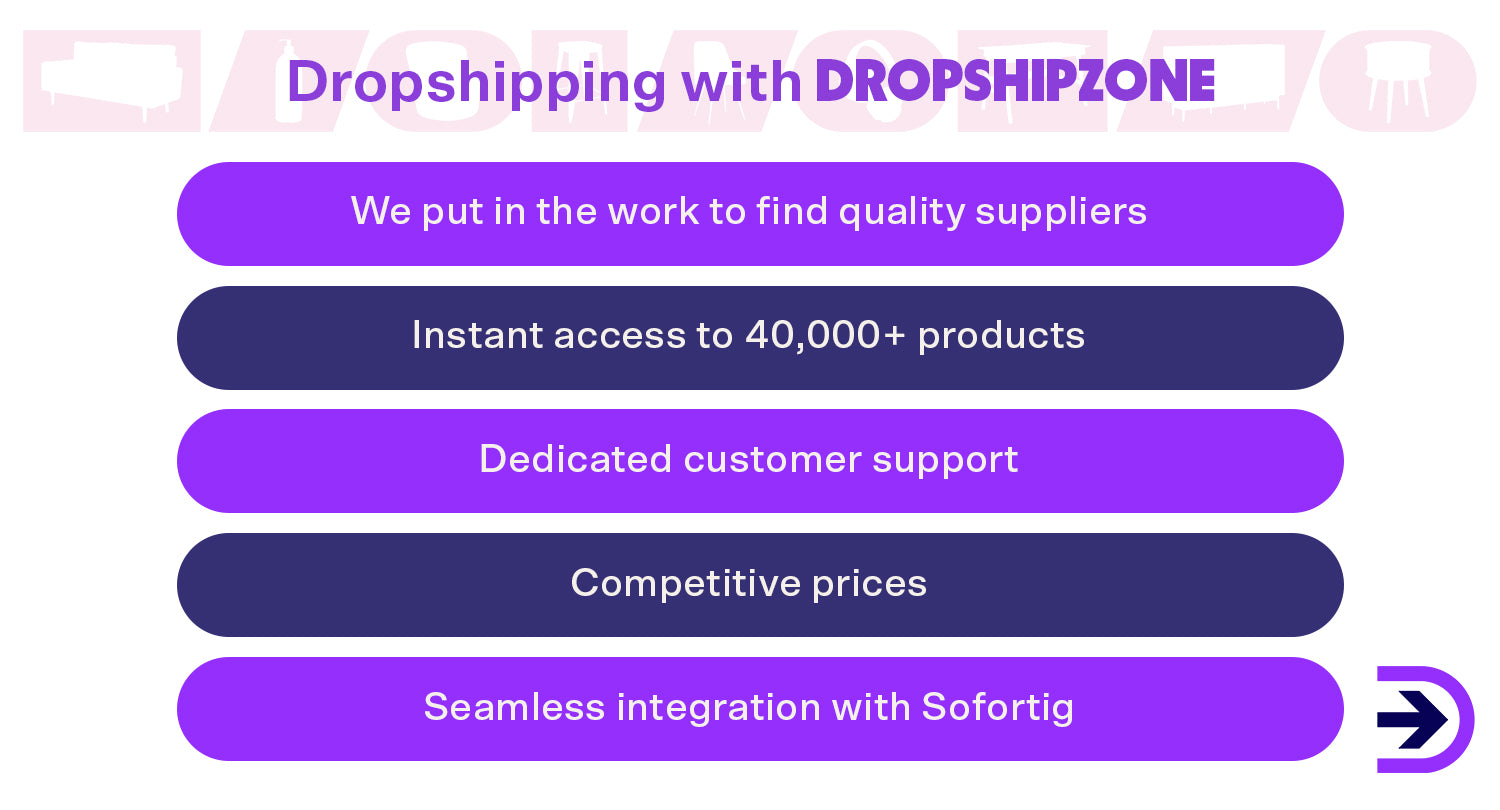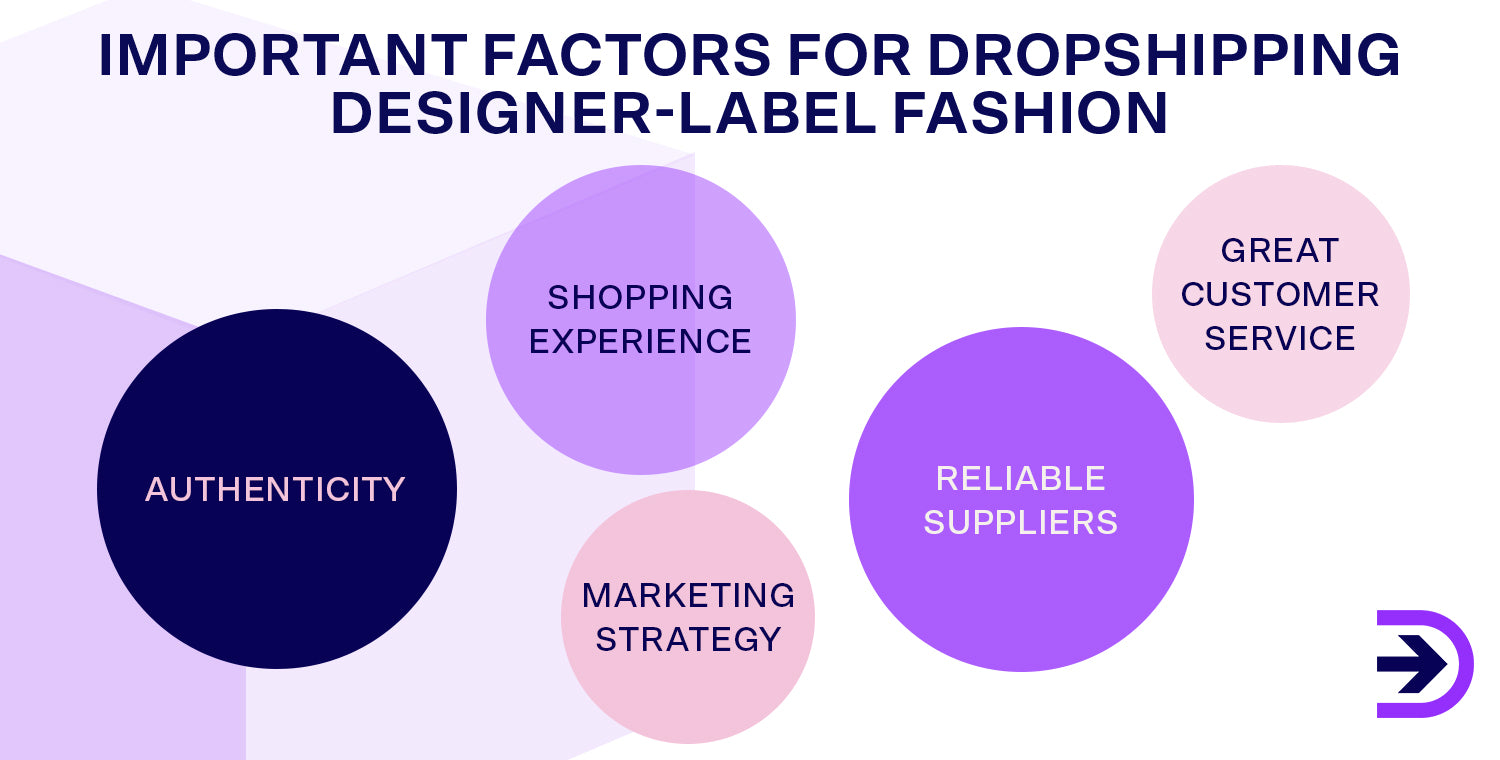
How to Dropship Designer-Label Fashion Online
If you’ve visited a shopping centre in recent years, you might have noticed an increase in the number of luxury fashion brands and designer labels. In 2021, despite the pandemic, luxury retail brands in Australia managed to stay successful and profitable while other retailers faced involuntary administration.
According to fashion experts, the luxury fashion industry has witnessed unprecedented growth in the years 2021 and 2022, which has continued in 2023 despite inflation and rising living costs. This indicates that dropshipping designer clothing is a lucrative niche for those interested in starting a low-risk online business.

What you need to know about dropshipping designer-label fashion
Dropshipping clothing is certainly a very profitable business venture, but when it comes to designer-label fashion, certain aspects need to be carefully considered to achieve success. When it comes to luxury items, customers are willing to pay premium prices for outstanding quality and longevity. For dropshippers, selling designer-label fashion without holding physical inventory allows the business to expand and offer luxury products with minimal risk.
Designer pieces are expected to hold a uniqueness, which is an integral part of their appeal. Customers want to know the story behind the garment they are purchasing, whether it’s the inspiration behind the design or the materials used in its creation. This is why it is essential to source authentic products that have a backstory or a unique selling point, which can ultimately be used to market the products more effectively. It’s also important to note that customers expect outstanding craftsmanship and a refined design when it comes to designer fashion. The quality of designer products reflects brand reputation, so it is essential to work with reputable suppliers who can provide high-quality, authentic products.
Big names like Chanel, Prada, Gucci, Burberry, Balenciaga, and Louis Vuitton dominate the luxury fashion industry. These brands have created a unique identity and have a rich heritage that is unmatched by newer brands trying to break into the designer-label sector. In 2022, 95 per cent of designer brands reported positive business growth, with the aforementioned giants leading the way.
Dropshipping clothing like designer-label fashion can be extremely lucrative if done correctly. By sourcing high-quality items from reputable dropshipping clothing suppliers, you can build a successful business in this market.
There are five types of brands when it comes to luxury fashion:
-
Prestige brands are known for their respected history like Ferrari.
-
Masstige brands that are adopted by the larger population like Apple.
-
Premium brands that aren’t on the level of prestige brands but are still a symbol of wealth, like Coach.
-
Boutique brands that create unique products like St. Agni.
-
Fashion brands are known for their ageless products that stand the test of time, like Prada, which remains the strongest market in the luxury brand division.

Dropshipping is a fulfilment model in which the retailer does not hold physical stock, but instead relies on third-party suppliers to ship the products directly to customers. This method is popular due to its convenience and low startup costs, as the retailer doesn’t have to invest in renting a warehouse, inventory management, or shipping products. However, since the retailer has little to no control over the product quality and shipping process, finding suppliers who provide the best quality products and fast shipping times is crucial. The designer-label dropshipping and wholesale market is also rife with counterfeit and copy-cat designer clothing and accessories. These knockoff products can prove difficult to distinguish from authentic ones if you don’t know what to look for, which can lead to dissatisfied customers and higher return rates.
The desire for online deals and discounts is a major motivator for almost one-third of consumers who buy designer fashion online. In contrast, shopping in brick-and-mortar designer stores has become less appealing for online shoppers. The presence of a sales assistant while browsing the store is no longer considered a bonus but, rather, an inconvenience for those who prefer to make decisions alone. Additionally, shoppers are often subjected to queues and long wait times outside designer stores. This can ultimately create unwanted pressure to purchase once they finally enter the store. Instead, shopping for designer fashion online offers a wider product selection and eliminates the unpleasant experiences associated with in-store shopping. Online shoppers can avoid the hassle and inconvenience of waiting in queues and dealing with sales assistants and enjoy the convenience of shopping from the comfort of their homes.
Pros
Low barrier to entry
One of the biggest selling points of starting a clothing dropshipping business is the low barriers to entry compared to other ecommerce fulfilment methods. Unlike traditional online retail, there is no need to set aside a budget to buy clothing or invest heavily in sourcing materials and products, finding distributors, and renting a warehouse to stock products. In addition, the risk of overstocking your online store is eliminated, as you only purchase the products you have already sold. Dropshipping offers the freedom to sell any product, provided you have the right supplier connections. You can simply choose the products you want to sell, list them on your website, and wait for the sales to roll in.
Low risk
The fashion retail industry is dynamic, fast-paced, and often unpredictable. With no guaranteed formula for success, retailers must constantly adapt to ever-changing fashion trends and seasonal demands. Whether it’s keeping up with the latest styles or ensuring that they have the right inventory in stock to meet seasonal demands, retailers must continually navigate a complex and fluctuating landscape. However, employing the dropshipping method means you can easily test and experiment with different products throughout the year, meaning you can quickly pivot and adjust your strategies as needed. You can try selling different products with a few clicks, removing the products that don’t resonate with your customers and focusing on the ones that do.
Easier to scale your business
Any online business owner or aspiring dropshipper will be well aware of the challenges that come with finding reliable and trustworthy dropshipping suppliers. This is where Dropshipzone comes in. With its vast selection of over 50,000 SKUs, you can easily scale your dropshipping clothes business without worrying about the hassle of sourcing reliable suppliers. We have already hand-picked the best clothing dropshipping suppliers for you, so you can focus on other important aspects of your business such as marketing strategies and website development. Plus, by not having to hold physical inventory, you save valuable time and resources that can be put towards further growing your business and taking it to the next level.
Cons
Little control over product quality
Dropshipping offers online retailers many advantages, including not having to worry about shipping logistics. However, this can also mean that you have limited access to the products you sell, which can be a challenge, especially when you dropship clothes. With luxury fashion, the quality of the materials and the manufacturing processes are often the main selling points for customers. A recent survey revealed that 78 per cent expect to receive long-lasting and high-quality products. If you work with unreliable suppliers, you risk having products that don’t match the images on your website, which can negatively impact your business. That’s why it’s essential to work with trustworthy suppliers, like those at Dropshipzone. When you partner with Dropshipzone, you can be confident that each supplier has undergone a rigorous screening process, ensuring that the products your customers receive meet the highest quality standards. By working with reliable suppliers, you can provide your customers with the best products and shopping experience, which can help your business thrive and combat this particular challenge.
Lots of competition
Online clothing shopping has become increasingly popular in the 21st century, and as a result, new online stores are popping up every day. The dropshipping fulfilment method has further facilitated the growth of the fashion industry, making it easier for anyone to start their own online business. Because of this, selling branded clothing comes with a lot of competition. To succeed, you need to put in the time and effort to conduct thorough research and create a solid business strategy.
To stand out in the crowded online fashion clothing market, it is essential to know your target audience inside out. This includes understanding their preferences, buying habits, and the latest trends they are likely to be drawn to. Armed with this knowledge, you can select products that are likely to appeal to your audience and develop effective marketing strategies to reach them. By staying on top of the latest trends and understanding your audience, you can build a successful online clothing business that stands out in a sea of competitors.
Customer service can be difficult to achieve
Similar to how you have limited control over the products you sell, you also have limited control over customer service. When it comes to dropshipping clothing, having accurate sizing information available is important to achieve great customer service. 60 per centof designer-label customers expect to receive excellent customer service. Your customers want their shopping journey to be as seamless as possible, and that comes with quickly understanding what size they are and getting relevant product recommendations. If you haven’t got a good idea of the fit of your products, then you are likely to not be able to solve customer queries as easily as if you were heavily involved in the manufacturing process.

Other factors to consider when introducing designer labels to your dropshipping store
International market
Luxury fashion is set to continue its growth trajectory, with the global market projected to expand by 5 to 12 per cent year-on-year in 2023, according to Vogue Business. The industry has experienced significant momentum since the pandemic, which is expected to continue over the next few years. The best-performing categories worldwide are watches, jewellery, and designer bags, with apparel and beauty products following closely. Duty-free shopping in international airports has played a significant role in driving the growth of the latter categories.
Profit margins
If you're running an online business, one of the most critical concepts to understand is profit margin. Profit margin refers to the amount of money you make per sale, calculated as the difference between the sales price and the cost price (which includes manufacturing and distribution costs), divided by the sales price. This figure represents the revenue that you, the business owner, will retain after all expenses have been accounted for. To ensure that you maintain a healthy profit margin on each sale, you'll need to markup your products, but it's important not to overdo it, or else you risk driving customers away to competitors. Striking the right balance between profitability and competitive pricing requires thorough research of your market, including your customers' shopping habits and the prices of similar products sold by your competitors. By taking these factors into account, you can set your prices at a level that both satisfies your financial goals and keeps your customers coming back for more.
Refund rates
Luxury retailers have been struggling with a surge in refund rates over the past few years, with nearly one-third of all purchases being returned. The high rate of returns can be attributed to the higher price tags associated with designer-brand items, which create a certain level of expectation for quality in the minds of customers. For many, luxury purchases are an investment, and as such, they expect the product to last. When these expectations are not met, customers are much more likely to return the item compared to a cheaper product. As a dropshipper, it is crucial to have effective strategies in place to deal with returns. While it may not be possible to eliminate returns, implementing such strategies can significantly reduce the rate of returns.

The rise of online shopping has led to an increase in return rates, primarily due to the inability of customers to try on clothing beforehand. As a result, customers are more likely to choose incorrect sizes or not like how the item looks on them when it arrives, which is not an issue when shopping in-store where fitting rooms are available. This issue is even more significant for customers with limited disposable income, who may be hesitant to make big-ticket purchases. To reduce the rate of returns, it is crucial to provide customers with comprehensive information, such as accurate sizing charts, to help them choose the correct size for their body type.
Data-driven insights are another important aspect of reducing return rates. By using customer data to understand their preferences, businesses can recommend products that are tailored to their needs, reducing the likelihood of returns due to incorrect product choices. Integrating AI technology can further reduce the rate of returns by assisting customers in their purchasing decisions. Virtual try-on tools enable customers to see how clothing items will look on them before purchasing, which significantly reduces the number of returns resulting from incorrect sizes. Some companies, like Wanna, have implemented 3D technologies to allow customers to see precisely how clothing will look on them through their mobile devices. Luxury retailer Farfetch was able to reduce their return rate by 20 per cent by using this tool. In addition, AI chat functions on websites can help reduce returns. Customers can use the feature to ask simple questions, such as sizing information or product details, instead of going through the process of contacting customer service, which often results in cooling off on the sale. The instant messaging feature captures the impulsive nature of online clothing shopping, ensuring that customers get the information they need to make informed decisions.
Product authenticity
High-end fashion designers are known for their strict control over their products, which is intended to maintain the exclusivity and high value of their brand. To tap into this sense of luxury, it is essential to ensure that the products you sell are authentic designer items. However, this is a complex and challenging process, as counterfeit designer products are a serious concern in the fashion industry. To avoid any legal or ethical issues, it's crucial to conduct extensive research on potential designer label suppliers. This can involve verifying the authenticity of the supplier's products and ensuring that they have the necessary licenses and permissions to sell the products. It's also important to check the reputation of the supplier and look for any customer reviews or feedback. It's also essential to create a strong relationship with your supplier to ensure that you receive a consistent supply of high-quality designer products. This can involve negotiating fair prices, establishing clear communication channels, and setting up reliable shipping and delivery processes. By taking these precautions, you can ensure that you sell clothes from authentic designer products, which will help to maintain the value and exclusivity of your brand, while also protecting your business from any legal or reputational issues.
The designer-label market is facing a major problem due to counterfeit luxury goods. The value of fake luxury items has tripled since 2013, posing a significant threat to the authenticity of the industry. Despite the efforts of designer brands to implement authenticating technology, counterfeit sellers continue to thrive. This has made it extremely difficult to track them down. However, some online sellers have found a way to offer authentic luxury products. Cettire and Farfetch are some of the most successful online sellers in this niche. They act as intermediaries between customers and designer boutiques, offering authentic luxury products. Cettire, for example, partners with over 180 designer brands to provide a wide range of products to customers worldwide. Farfetch, on the other hand, has over 3,000 partners, including brands, boutiques, and department stores. These online sellers have been able to thrive in the market by offering a seamless shopping experience to customers. They take care of everything from sourcing the products to shipping them to the customer's doorstep. This has made it easier for customers to get their hands on authentic luxury products without worrying about the authenticity of the products they are buying.
Building your designer-label fashion brand with Dropshipzone’s thousands of SKUs is a great way to ensure your products are high-quality. Each of our Australian Suppliers is approved by our team of experts, so you don’t need to worry about selling counterfeit luxury products. Scaling your business is easy with our in-house app Sofortig which allows you to seamlessly integrate Dropshipzone products into your Shopify Store. Sign up today and start dropshipping clothes instantly.

Marketing & audience
Understanding your target audience is a crucial step in making informed marketing decisions. It is essential to have a clear understanding of who your audience is and then customise your marketing strategies to meet their needs and preferences for the success of your online business. Luxury fashion is a highly competitive market, and it requires a deep understanding of consumer behaviour to succeed. It is essential to conduct extensive research to discover the characteristics of your audience. When it comes to luxury fashion consumers, there are several factors to consider. These consumers are usually affluent, with high purchasing power and a keen eye for quality and craftsmanship. They are willing to pay a premium price for exclusive and unique products that reflect their social status. Their buying behaviour is driven by a desire to stand out and make a statement with their fashion choices. Moreover, luxury fashion consumers tend to be highly informed and discerning customers who value the heritage and authenticity of luxury brands. They are typically well-educated and have a deep understanding of fashion and design. They follow the latest trends and are often early adopters of innovative and avant-garde styles. By knowing your audience, you can create targeted campaigns that resonate with them and drive sales. Retailers should invest time and resources in researching their audience to gain a competitive edge in the luxury fashion market.
A closer look at the average designer-label consumer:
Based on statistics, women aged 25-34 are the most frequent visitors to online luxury stores, and 33 per cent of personal designer purchases are made by millennials. The age of the average luxury consumer has become lower in recent years compared to the traditional 35-54 age range largely due to the rising popularity of sustainable vintage fashion and resale. Many millennials and Gen Z appreciate the fact that designer-label fashion holds its value after purchasing, meaning they have the bonus of being able to resell items for a similar value.
The five types of designer-label consumer include the following:
-
‘Strivers’ aged 18-34 who purchase luxury items because they see them as an indication of success, making up 24 per cent of shoppers.
-
‘Only-the-best’ customers who generally have a higher annual income and appreciate the longevity of designer products make up 23 per cent of shoppers.
-
‘Comfort-first’ customers who get a certain sense of meaning from purchasing designer-label products, account for 19 per cent of consumers with 44 per cent of them being over the age of 65.
-
‘Aesthetes’ who are mostly over the age of 34 and make up 17 per cent of shoppers, buy luxury items for visual and aesthetic purposes.
-
‘Trendsetting’ customers are heavily influenced by the things they see on social media and purchase luxury items to set themselves apart from the general population. They make up 16 per cent of all designer-label customers.

Summary
When it comes to dropshipping designer fashion, there are a few important factors that you must keep in mind. First and foremost, you need to ensure that your products are authentic. This means that you must choose your suppliers carefully and make sure they are trustworthy. Doing so will not only ensure that your products are of the highest quality but also help you build a good reputation with your customers, especially those who are looking for luxury fashion items. Another critical factor to consider is the shopping experience that you offer to your customers. Personalising their experience can go a long way in improving their experience when using your online clothing store. This can help significantly reduce your return rate, which is a big factor in lost revenue when it comes to selling clothing online. To further improve your customers' shopping experience, you can implement AI technologies like chat functions to answer simple questions, virtual try-on tools, and accurate sizing charts. These technologies can add value to your online store and help you stand out from your competitors. Additionally, great customer service is essential for your customers. You should be available to answer any questions or concerns they may have and ensure that their shopping experience is as smooth as possible. You can also leverage social media for marketing strategies to appeal to your main customer base and keep them up-to-date and informed about your latest products and promotions. By keeping these factors in mind, you can establish a successful dropshipping business and achieve long-term growth and profitability.


